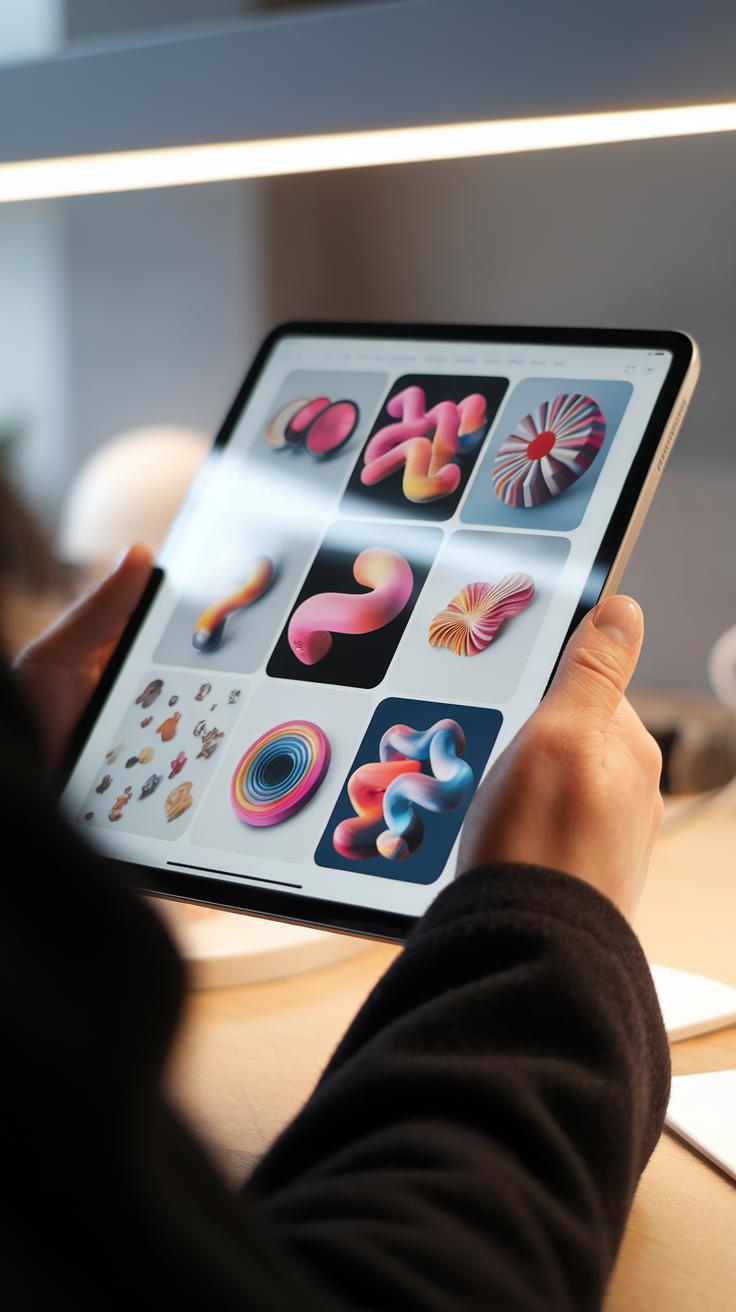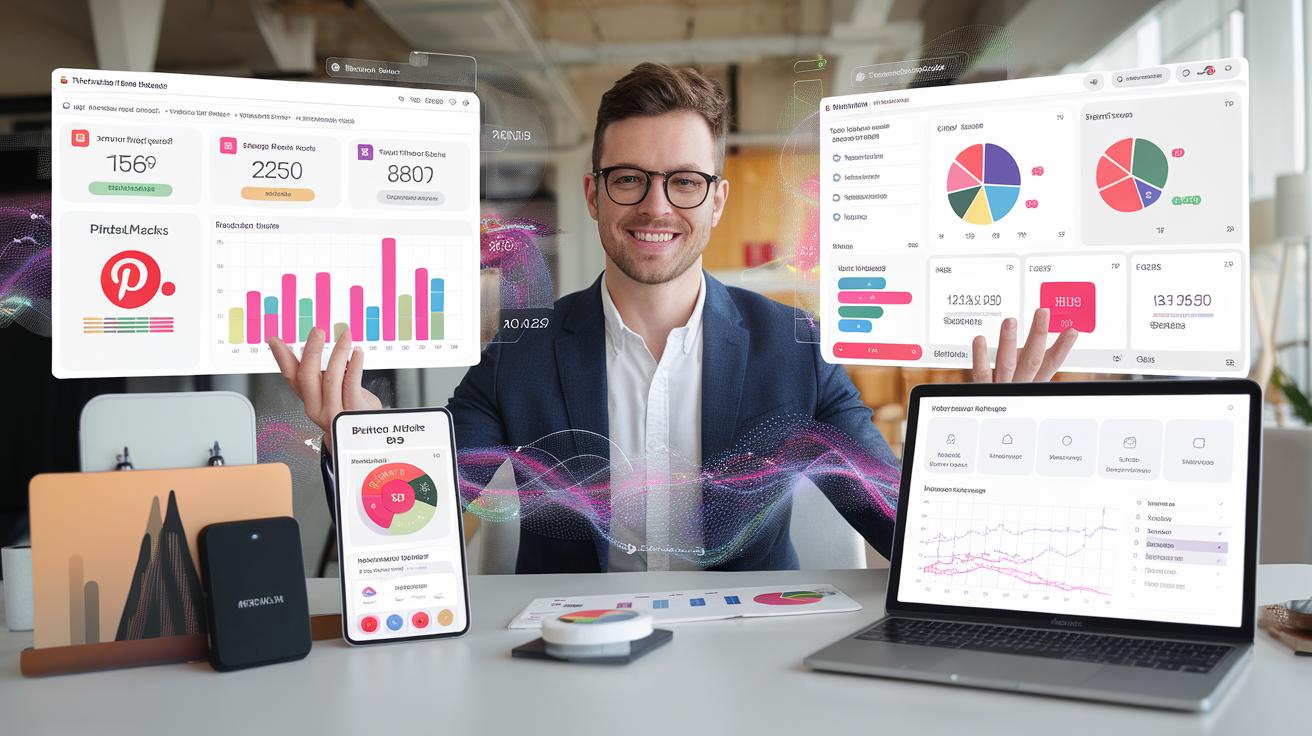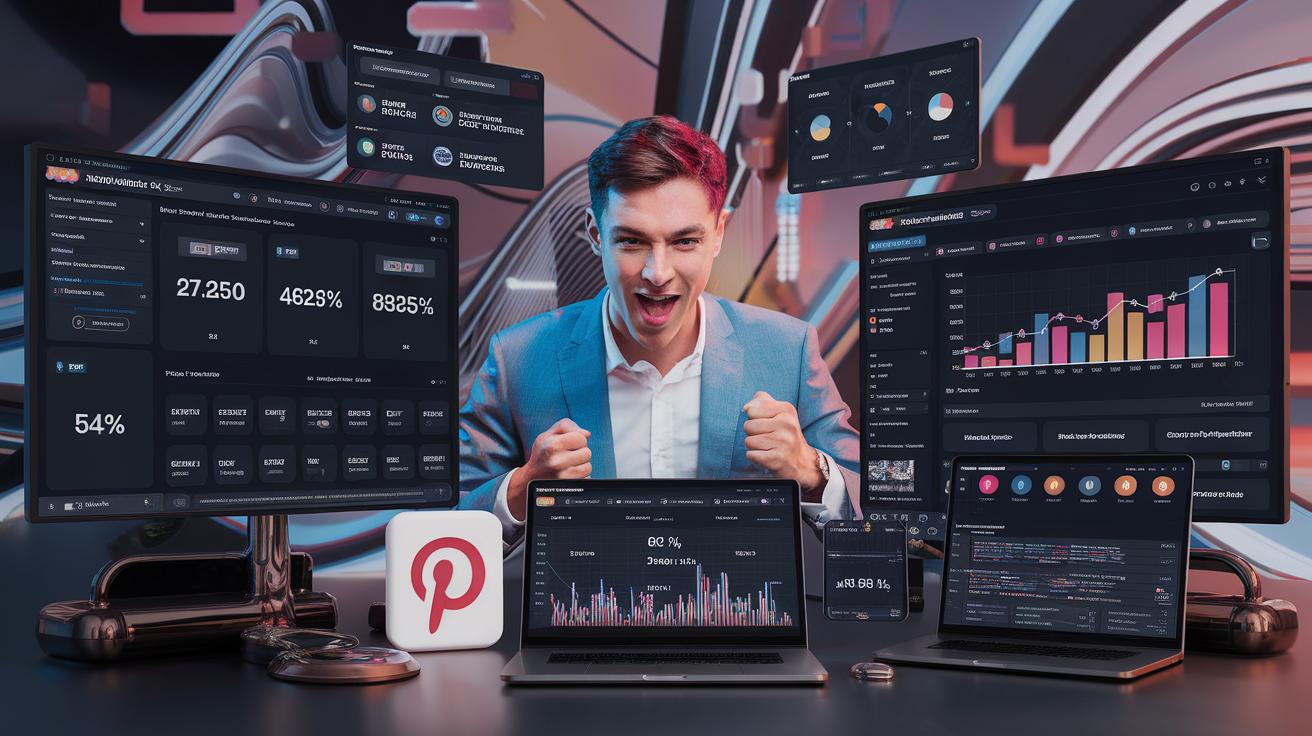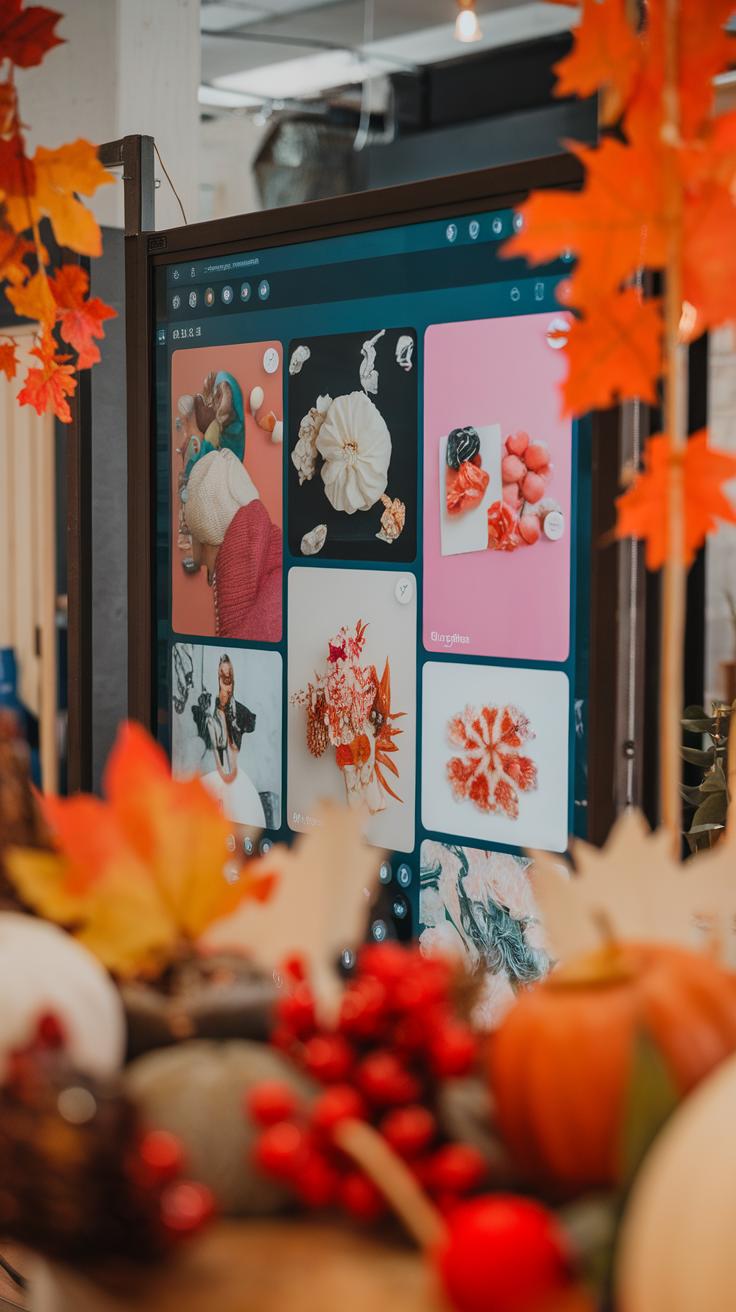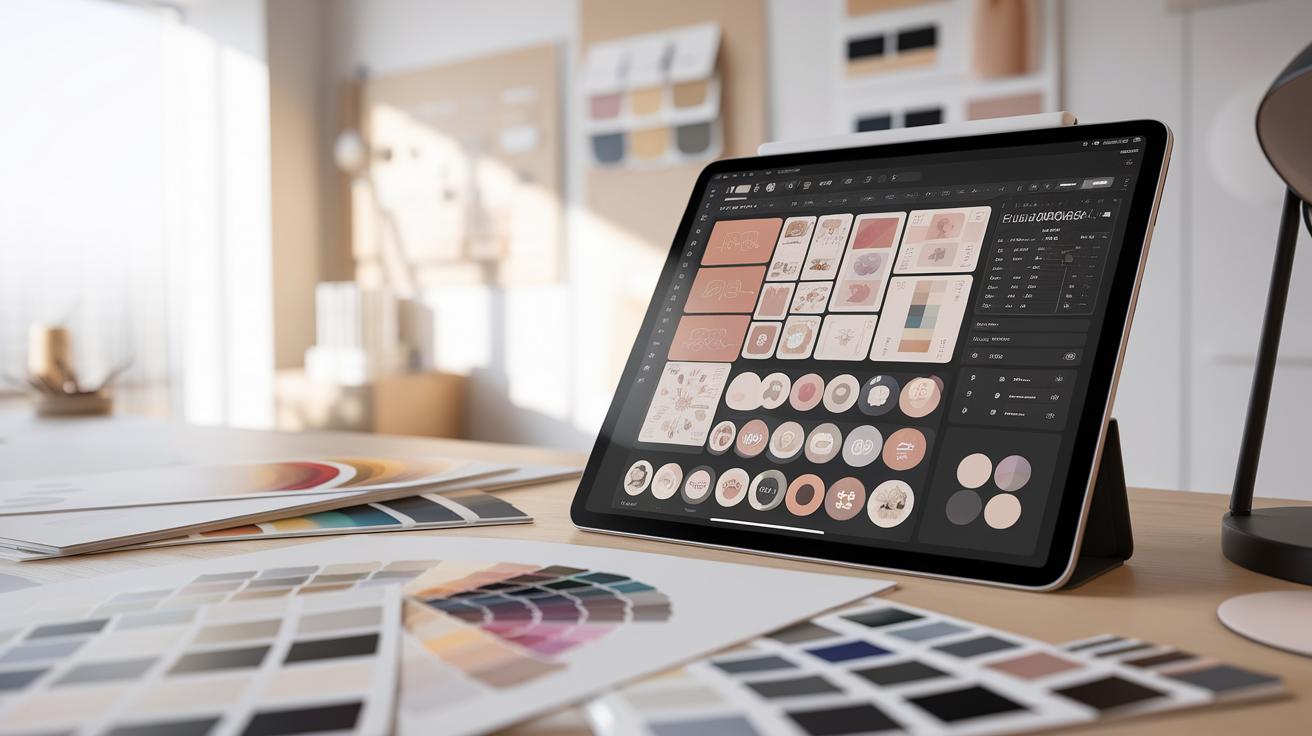Introduction
Pinterest has become a powerful tool in the marketing landscape, enabling brands to showcase their offerings in a visually engaging format. Creative pins are at the heart of this platform, drawing users’ attention and encouraging them to take actions such as visiting a website, signing up for newsletters, or making purchases. The interplay between quality imagery and compelling content is crucial, as these elements are what distinguish successful pins from those that fade into the background. Understanding how to leverage creative pins can drastically enhance audience engagement and brand visibility.
This article looks into the intricacies of Pinterest marketing, focusing specifically on the creation of impactful creative pins. We will touch upon the essential components that make a pin successful, from design principles to strategic content ideas. By diving into these aspects, marketers can elevate their Pinterest game, fostering greater engagement and driving meaningful interactions with their target audience.
Understanding the Importance of Creative Pins in Pinterest Marketing
The Role of Creative Pins in Driving Engagement
Creative pins are essential in the toolkit of marketers aiming to achieve success on Pinterest. Unlike simple graphics or basic text posts, these pins harness artistic elements and strategic design to attract attention and capture the viewer’s interest. The dynamic nature of creative pins significantly influences user engagement, as they not only stand out in a crowded feed but also evoke emotional responses that compel users to take action. This action might range from saving the pin to visiting a website or making a purchase, ultimately translating into higher conversion rates for brands.
Engagement on Pinterest is community-driven, meaning that a single creative pin can not only spark interest but also encourage users to share the content within their networks, amplifying its reach. This word-of-mouth sharing enhances brand awareness as more users become familiar with a brand and its offerings through these visually compelling pins. Thus, investing in creative pin design is not merely a cosmetic choice; it’s a strategic approach to increasing visibility and interaction through one of the most popular visual platforms available.
Brand Awareness through Visual Storytelling
Creative pins serve as a form of visual storytelling that invites users to engage with a brand on a deeper level. Each pin presents an opportunity to convey a brand’s identity, values, and message, building a narrative that resonates with the audience. The more a viewer connects with a pin’s story, the more likely they are to remember the brand, leading to lasting impressions. Strong visuals combined with a clear storyline help break the noise of everyday scrolling, making creative pins a powerful asset for marketers.
Effective creative pins often mirror current trends, incorporating popular themes, styles, and colors that appeal to the target audience. When users identify with the aesthetics and messaging of a pin, they are more inclined to interact with it, ultimately driving engagement. This cyclical process of pin creation leading to engagement results in not only improved metrics for brands but also fosters a community of loyal followers who are excited to see what comes next. As such, the importance of creative pins in marketing cannot be overstated; they are a vital element in the broader strategy of building brand presence and encouraging user interaction on Pinterest.
Elements of Effective Creative Pins Design Components That Drive Engagement on Pinterest
Key Design Elements for Engaging Creative Pins
Effective creative pins on Pinterest are not merely a collection of intriguing images; they represent a carefully crafted blend of design elements that together drive engagement and convey messages clearly. To harness the full potential of this platform, marketers must recognize the core components that transform regular pins into visual storytelling devices.
One of the most significant elements is color. Color choices evoke emotions and can influence user behavior. Pins with vibrant, contrasting colors tend to stand out in a user’s home feed, making them more likely to be clicked and saved. For example, a combination of bright colors against a muted background can create a focal point that captures attention instantly. Additionally, using a consistent color palette across all your pins reinforces brand identity, making your content easily recognizable amidst a multitude of other posts.
Typography is another critical component of creative pins that often goes overlooked. The choice of fonts should align with the brand’s voice while ensuring readability. A clear, legible font is essential for pins, particularly because many Pinterest users scroll quickly. Mixing font styles—such as a bold header font paired with a simpler body font—can create a visually appealing hierarchy that guides viewers through the content. Consistency in typography not only strengthens branding but also enhances the user’s reading experience.
Images are the heart of any pin. High-quality, relevant images can evoke curiosity and emotion, compelling users to click through for more information. It is vital to use images that reflect the content’s intention and resonate with the target audience. Infographics, lifestyle shots, and user-generated content can be particularly effective in creating relatable and shareable pins. Incorporating elements like faces or familiar settings can enhance emotional connection and boost engagement.
Incorporating text overlays on images can significantly increase the efficacy of a pin. This tactic helps clarify the message and provides context, enticing users to take action. Engaging headlines or intriguing questions can act as a hook, drawing viewers in and prompting them to click. In summary, understanding and implementing these key design elements—color, typography, and images—are fundamental to creating creative pins that not only capture attention but also foster engagement on Pinterest.
Crafting Compelling Pin Descriptions for Enhanced SEO and Engagement
Effective Techniques for Writing Pin Descriptions
When crafting pin descriptions, the importance of SEO cannot be overstated. SEO-friendly descriptions increase the visibility of pins within Pinterest and on external search engines. Engage your audience by using descriptive keywords naturally. Research trending keywords in your niche, and incorporate them seamlessly into your descriptions. Aim for a balance: write in a way that captivates your audience while also keeping search engines in mind.
Keep your descriptions concise yet informative. Ideally, they should be between 50 and 100 words, packing enough information to invite clicks while remaining digestible. Start with a strong hook that piques interest, followed by a brief explanation of the content. For example, instead of saying, “Check out my new recipe,” a more engaging option could be, “Savor the flavors of summer with this zesty watermelon salad that’s perfect for picnics.” This approach entices users while offering insight into what they can expect.
Strategic Call-to-Actions and Inviting Engagement
Integrating call-to-action phrases is essential for driving engagement. Phrases like “Learn more,” “Try this now,” or “Join us for tips” create a sense of urgency and encourage users to click through. Be strategic about placement; often, a call-to-action works best at the end of the description after providing valuable information. Framing it as an invitation can further enhance the engagement, encouraging users to take that next step.
Using formatting techniques adds visual appeal to your descriptions, making them easier to read. Bullet points or short lists can organize information effectively, allowing users to quickly grasp the essentials. For example:
- Ingredient highlights for easy understanding
- Steps to creating the pin content
- Viewer benefits or takeaways
Consider incorporating elements that encourage user interaction, such as questions. Engaging your audience with a query can prompt users to comment and share their insights, creating a sense of community around your content. Questions like “What twist would you add to this?” or “Have you tried this before?” turn passive viewers into active participants, boosting the overall engagement of your pins.
Utilizing Trends and Seasonal Content Creating Relevant Creative Pins
Leveraging Current Trends for Creative Pins
In the ever-changing landscape of Pinterest, staying abreast of current trends and seasonal themes can significantly enhance the relevance of your creative pins. By tapping into what’s popular, you can create visually appealing content that resonates with users. For instance, trends can arise from various sources, including social media buzz, cultural moments, or even viral challenges. Monitoring platforms such as Google Trends or Pinterest Trends itself provides insightful data on what users are searching for at any given moment.
Focusing on trending topics allows you not only to create timely content but also to position your brand as an active participant in ongoing conversations. For instance, if there’s an emerging trend associated with home improvement, crafting pins that reflect this theme with practical tips and engaging visuals can spark interest. These types of creative pins often see increased engagement rates because they cater to the current interests and needs of users looking for the latest ideas and solutions.
Emphasizing Seasonal Content in Creative Pins
Seasonality plays a crucial role in shaping user behaviors and interests on Pinterest. The platform has a unique cyclical nature, where certain topics blossom at specific times of the year. For example, during the holiday season, users flock to Pinterest for gift ideas, decoration inspiration, and festive recipes. By aligning your creative pin strategy with seasonal events—like back-to-school, Halloween, or summer travel—you can ensure that your content is timely and relevant.
To capitalize on this seasonal engagement, begin planning your pins ahead of the relevant season. Content calendars are invaluable tools for this purpose. Craft pins that include seasonal colors, themes, and visuals to catch the eye of users. For example, during autumn, incorporate warm colors and imagery that evokes feelings of coziness, while summer pins might feature bright, vibrant aesthetics. Combining seasonal visuals with trending topics can create powerful pins that drive engagement.
As trends evolve and seasons change, continuously adapting your creative approach can keep your content fresh and engaging. Regularly reviewing current data helps ensure that your pins not only attract attention but also inspire users to save, click, and interact, thus positioning your brand for success in the competitive Pinterest space.
Analyzing Performance and Making Improvements Creative Pins That Drive Engagement
Tracking the Success of Creative Pins
To effectively understand how your creative pins resonate with your audience, implementing a robust tracking system is vital. Using Pinterest Analytics is the first step in this process. This tool provides a wealth of data, allowing you to monitor key metrics like impressions, clicks, saves, and engagement rates. By paying close attention to these metrics, you can discern which types of content are performing well and which are falling short.
Focus on specific elements of your creative pins to gauge performance. For instance, analyze the visual style, copy, and overall layout. Are bright colors or moody tones more appealing to your audience? Does a certain font style yield more clicks? Conducting A/B tests by creating multiple variations of a single pin can yield gratifying insights. This means modifying one aspect, such as the title or imagery, and observing the differences in engagement.
Data-Driven Improvements
Once you have gathered data, the next step is making informed improvements. Start by identifying patterns within your analytics. For example, if pins featuring videos achieve higher engagement rates than still images, consider integrating more video content. Additionally, if you notice spikes in traffic linked to specific keywords or trends, adapt your pin descriptions and hashtags to align with those findings.
Analytics should not dictate a static approach; they are a guide to continuing evolution. Schedule regular reviews to examine analytics over different time frames—weekly, monthly, or seasonally. This enables tracking of both short-term and long-term trends and helps adapt your strategy as necessary.
Engagement can also be enhanced by monitoring audience feedback. Comments, shares, and interaction rates can give valuable insights into what resonates most with your community. Engaging with your audience can lead to deeper connections, enhancing brand loyalty. Consider encouraging feedback or running polls related to your pins, allowing you to further refine your content.
Tracking your creative pins’ performance and making data-driven adjustments offers an ongoing opportunity to boost engagement and achieve Pinterest marketing success. By focusing on analytics, conducting A/B tests, and being receptive to audience feedback, you can enhance your strategy effectively—and keep your content fresh and engaging for your audience.
Combining Organic and Paid Strategies The Balance Between Organic Reach and Paid Promotions for Maximum Engagement
Integrating Organic Growth with Paid Reach
Pinterest serves as a dynamic platform where users seek inspiration and ideas, making it imperative for brands to adopt a multifaceted approach to engagement. Balancing organic content with paid promotions can exponentially enhance visibility and interaction. While organic reach helps in establishing brand credibility and fostering community, paid promotions act as a magnifying glass, amplifying reach to targeted audiences.
To achieve optimal results, it is essential to understand how these two strategies complement each other. Organic pins, created with compelling visuals and descriptions, establish authenticity and build a loyal following. When these pins resonate with your audience, they can generate natural shares and saves, organically enhancing visibility. However, new accounts or niche brands may struggle to gain traction without initial visibility.
This is where paid promotions become a valuable asset. Paid Pins, or promoted content, can directly target the audience demographics you seek, driving traffic to your website or blog posts. By investing in paid strategies, brands can boost their top-performing organic content for greater reach, thereby multiplying engagement metrics. Keeping a consistent brand voice and visual style across both organic and paid content is critical for seamless branding and user experience.
Strategic Planning for Enhanced Engagement
When merging these strategies, it’s beneficial to establish clear objectives for both organic and paid efforts. Consider employing a content calendar that outlines when to share organic posts and when to promote high-performing content through paid ads. This structured approach can help maximize the impact of both strategies.
Tracking performance analytics for both organic and paid Pins will enable brands to refine their strategies effectively. Look for correlations between engagement rates from organic posts and the success of corresponding paid promotions. Understanding which content performs well can help brands allocate budgets more effectively, with clarity on which organic themes should be amplified through ads.
A blend of organic and paid strategies is integral for driving engagement on Pinterest. By thoughtfully integrating these approaches, brands can cultivate a stronger online presence, foster a community of engaged followers, and consistently achieve their marketing goals.
Conclusions
Mastering the art of creative pins is vital for businesses looking to thrive on Pinterest. Through careful attention to design, understanding the audience, and the strategic integration of keywords, marketers can craft pins that not only attract but also retain viewer interest. The insights shared throughout this article provide a comprehensive framework for creating content that speaks to users while still being aligned with the brand’s goals.
The success of Pinterest marketing hinges on continuous experimentation and adaptation. As trends evolve and the platform itself changes, staying informed and responsive to what resonates with audiences will ensure that your creative pins continue to drive engagement and contribute positively to your marketing efforts.




